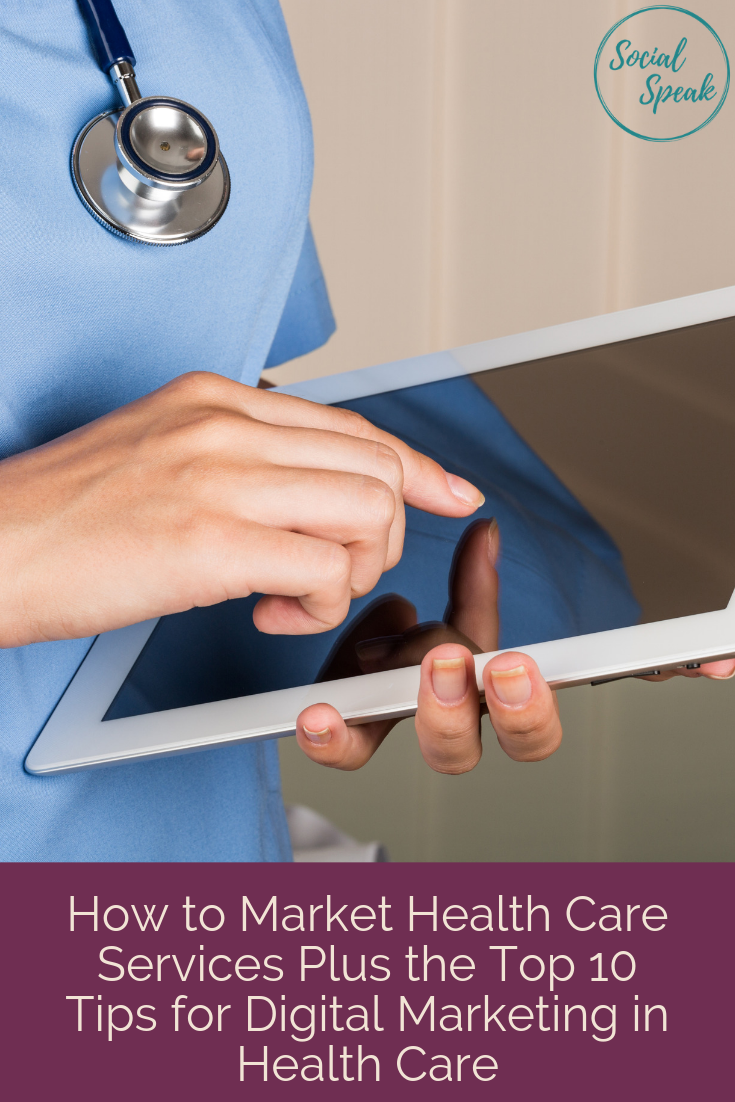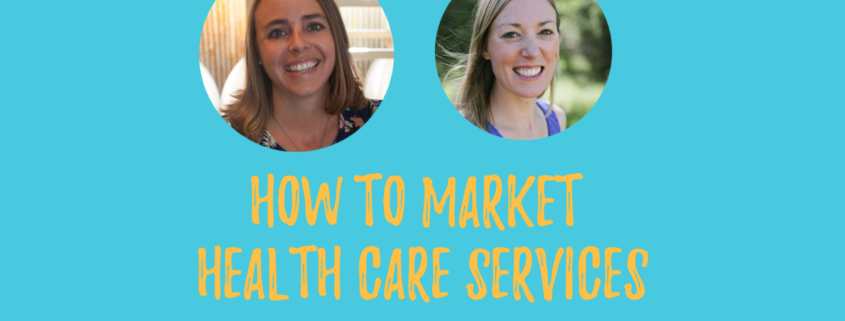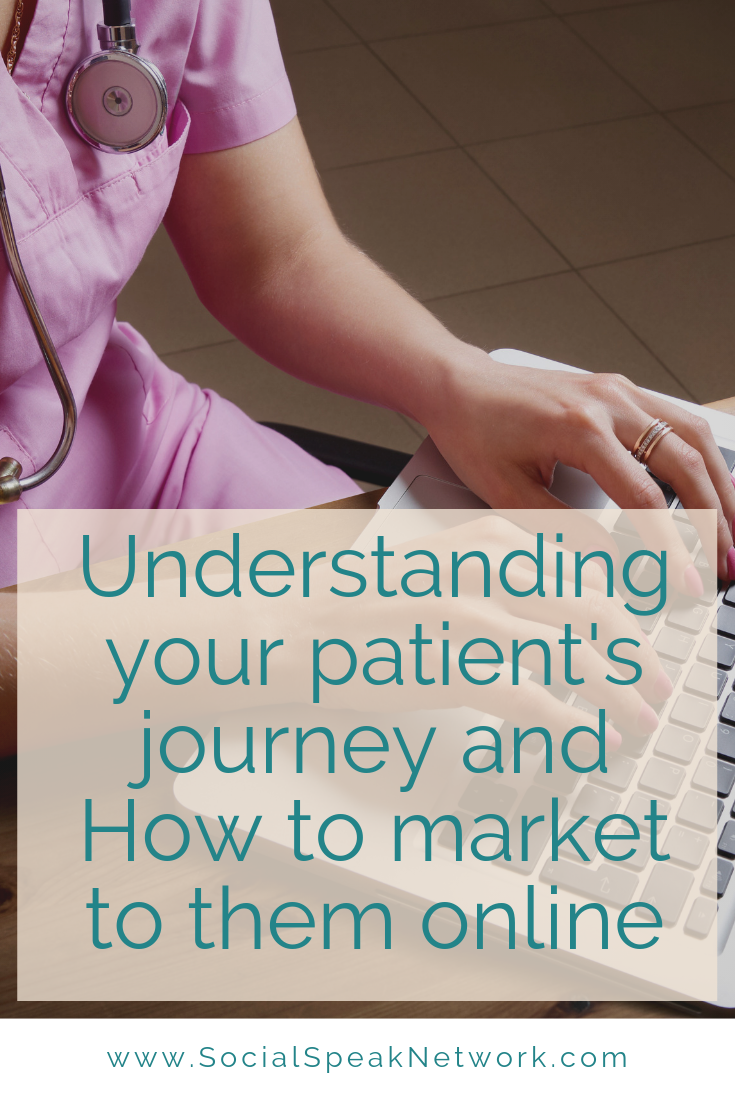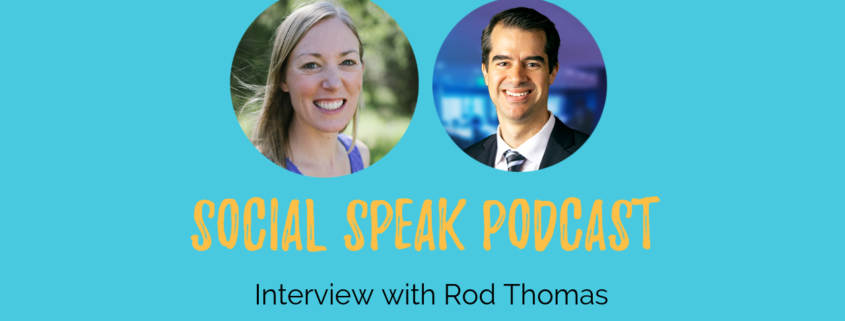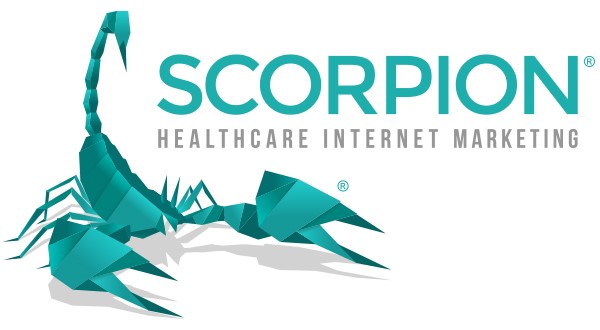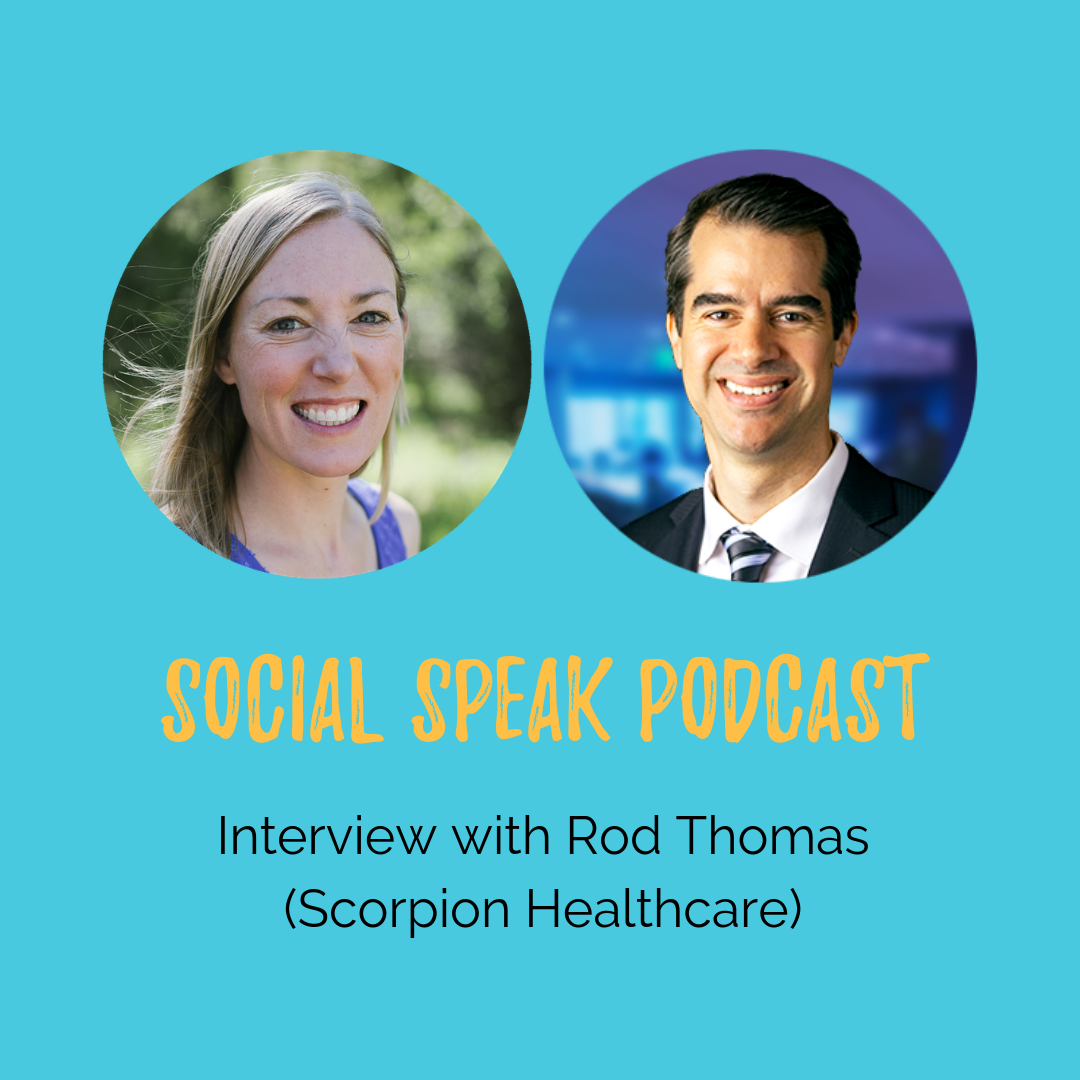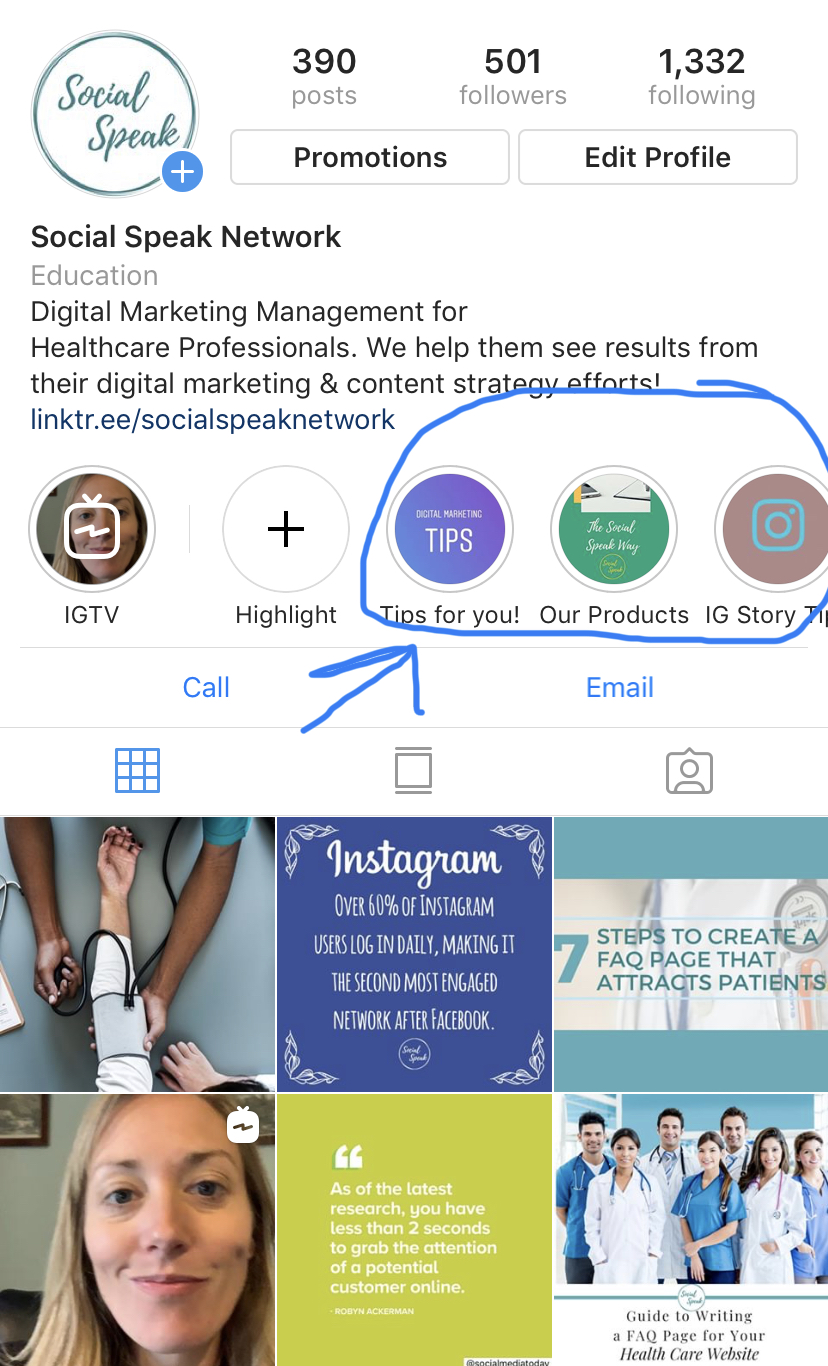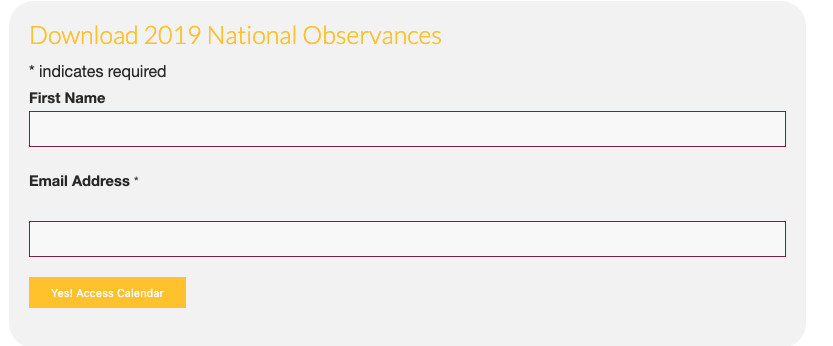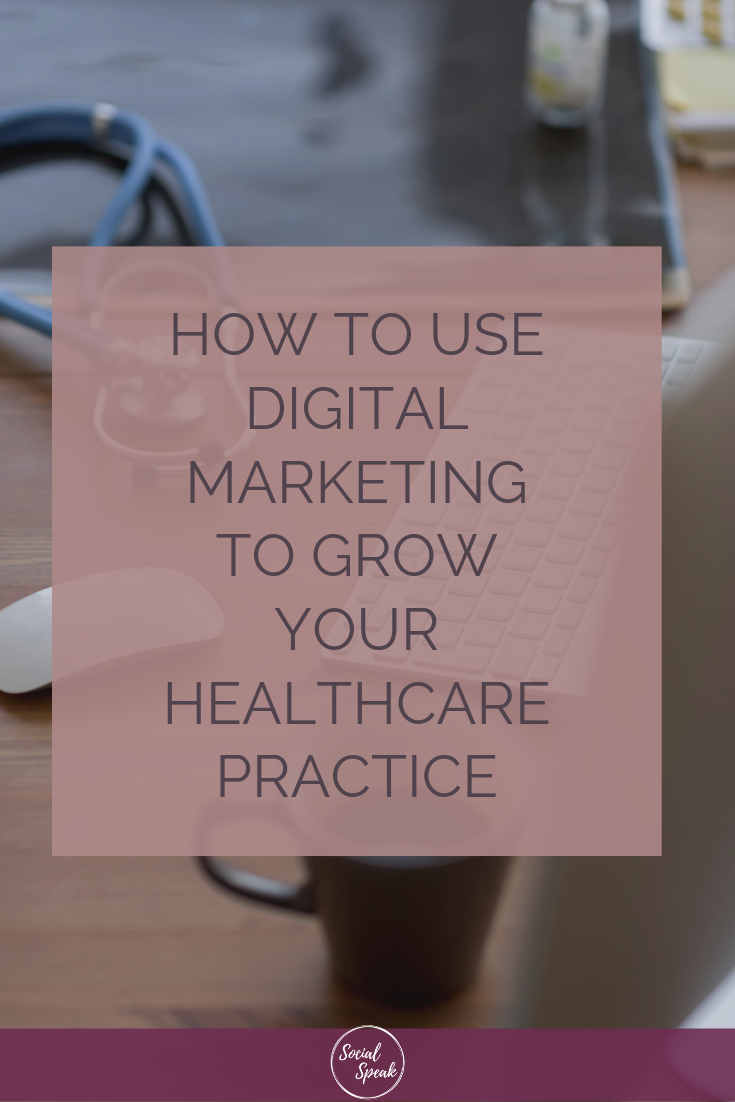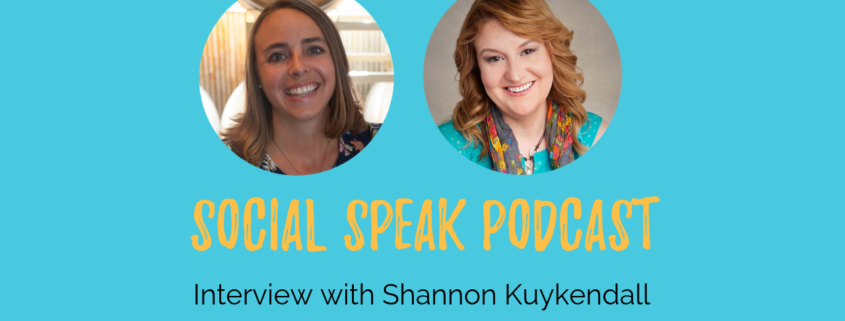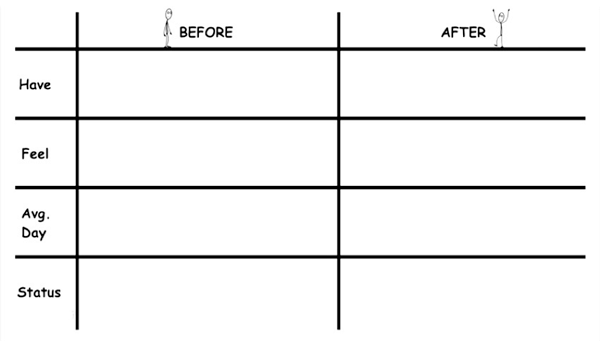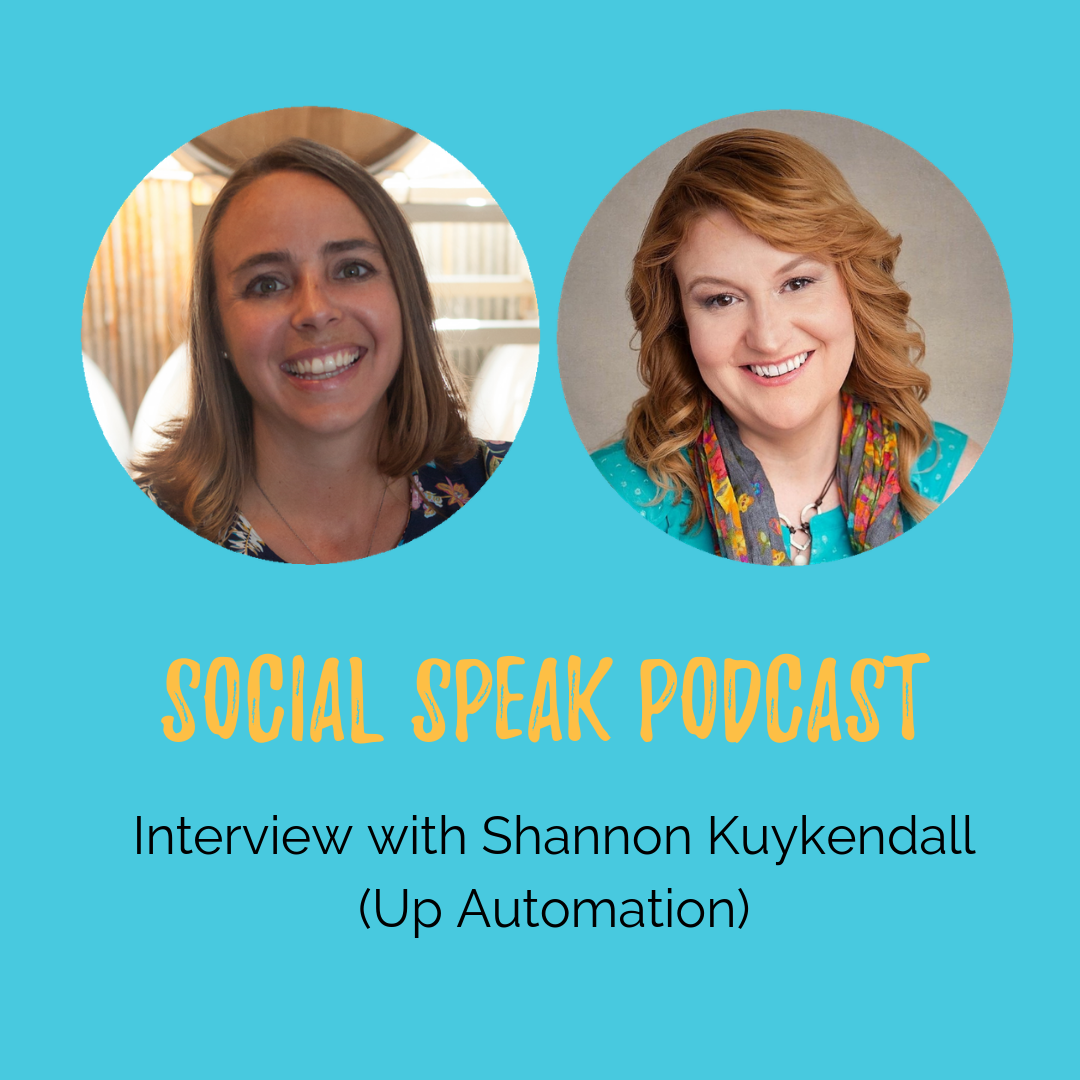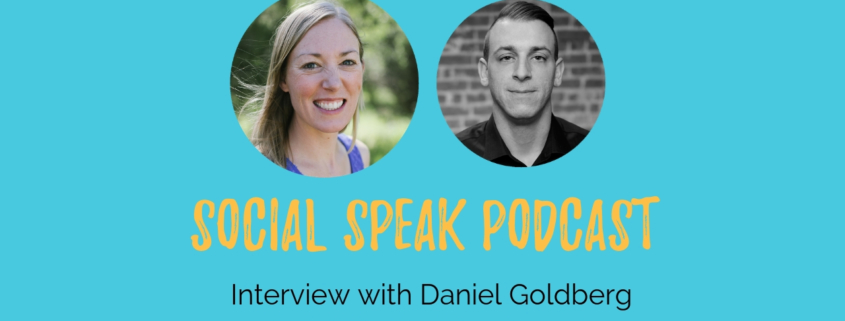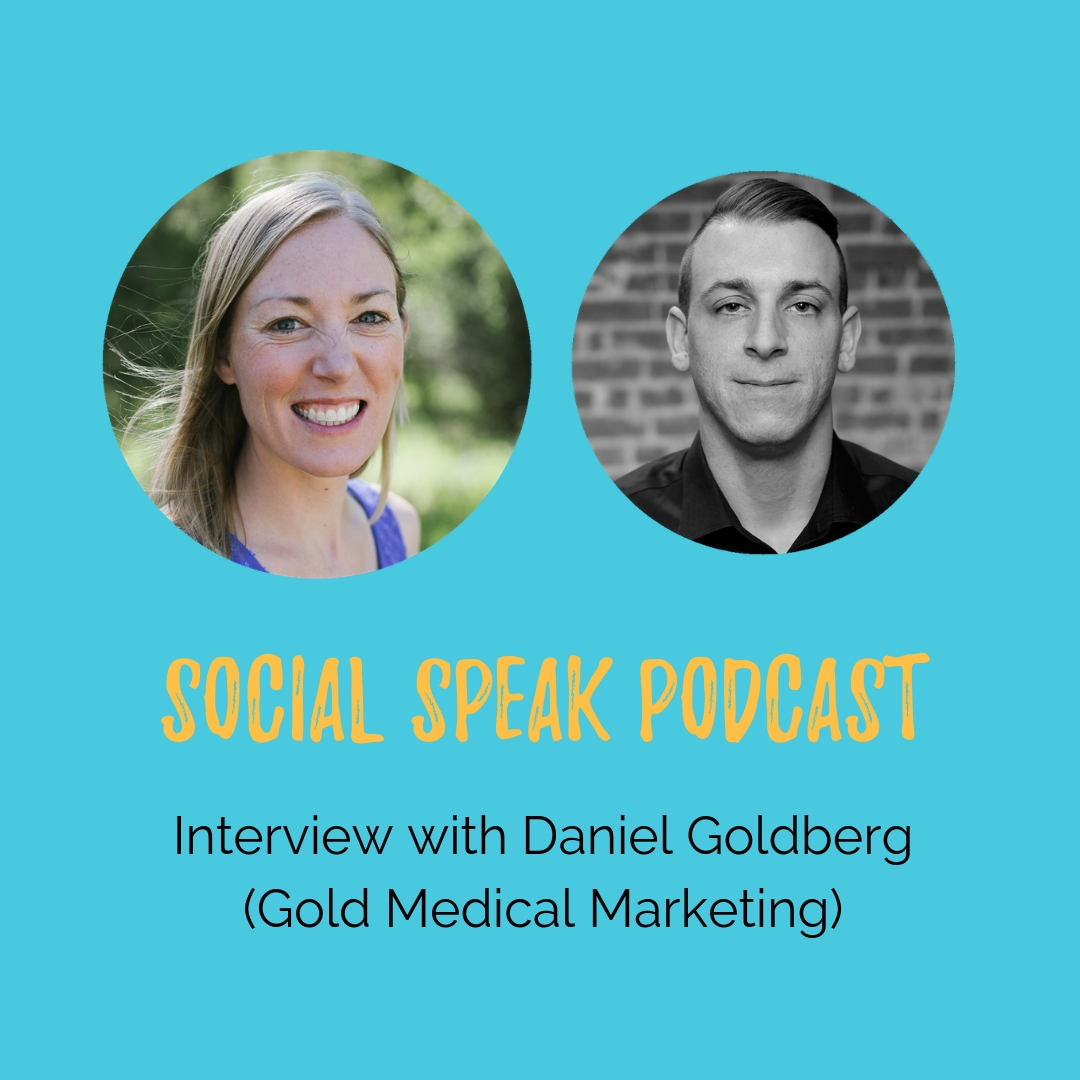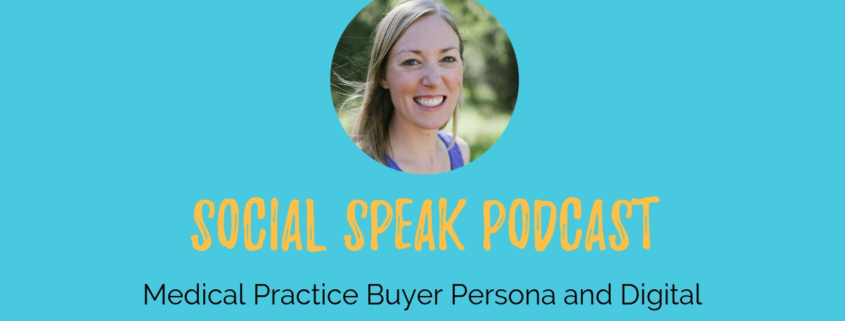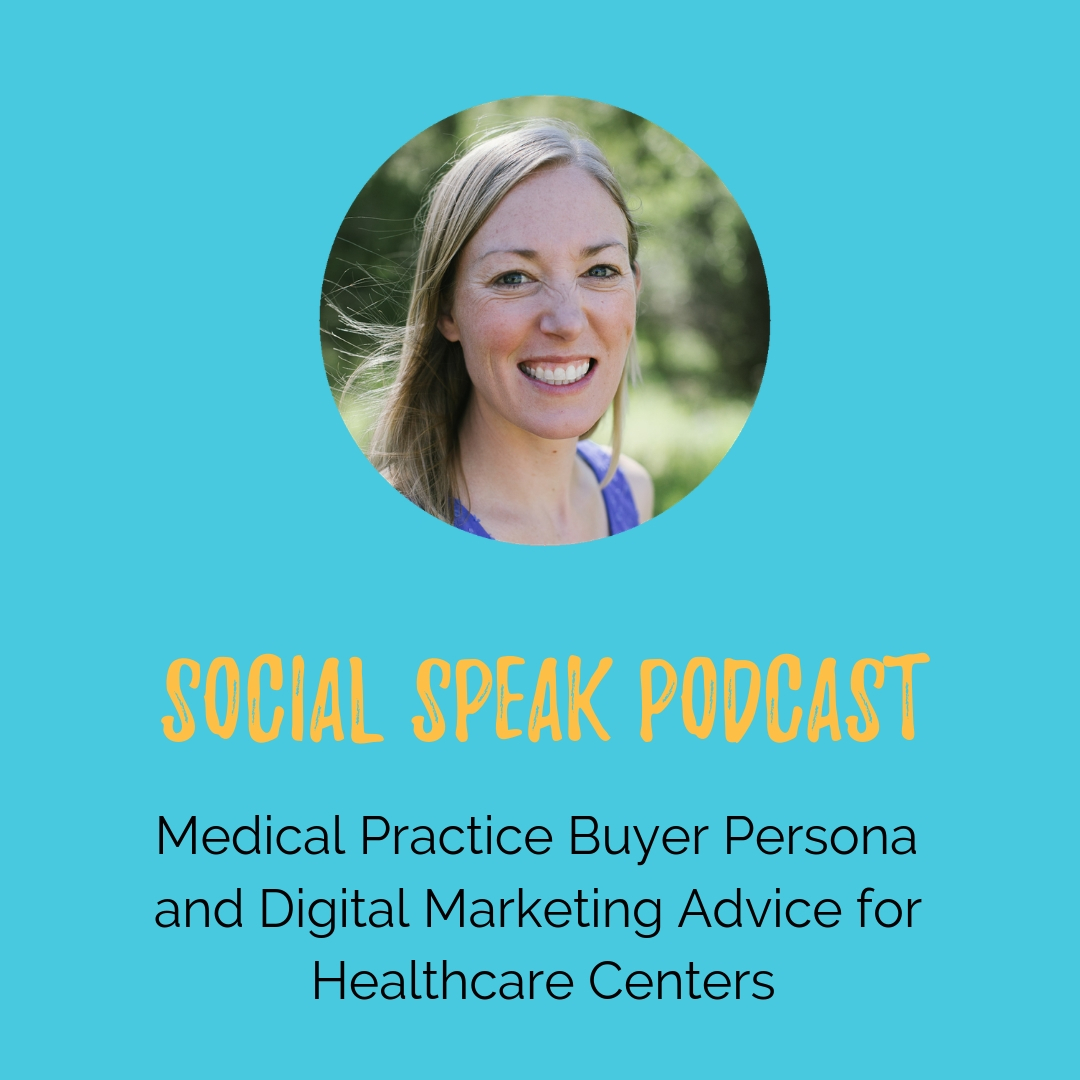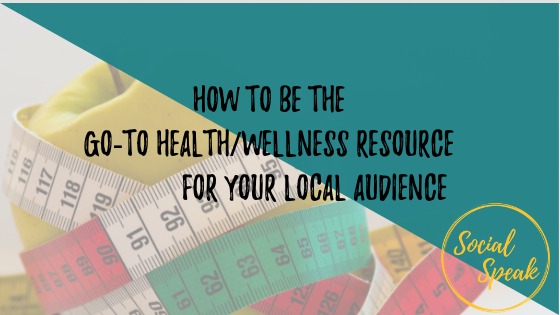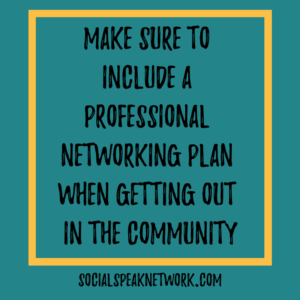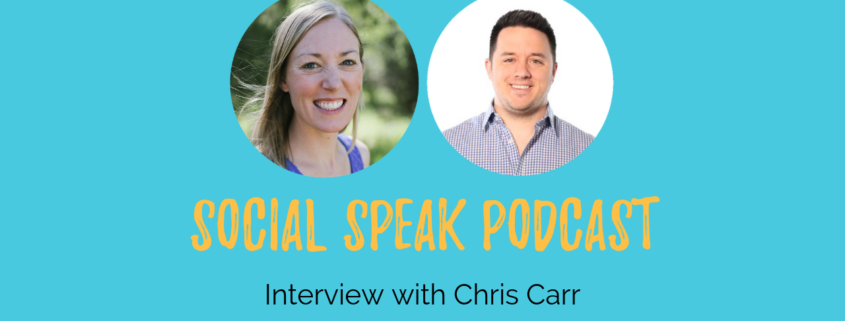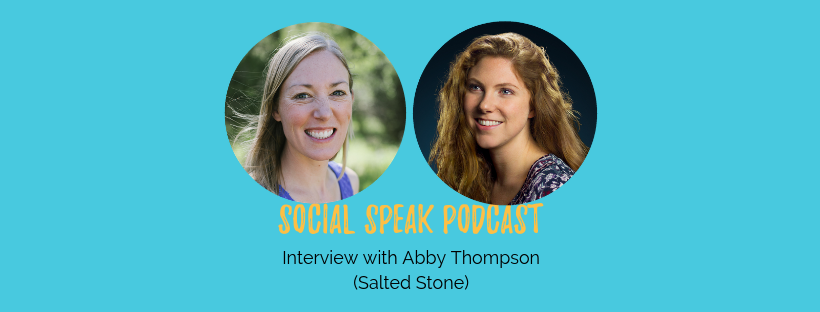How to Market Health Care Services
As doctors, you tell patients all the time that an ounce of prevention is better than a pound of cure. Although we often use this axiom when referring to health, we believe that it also applies to your marketing strategy.
Knowing how to market health care services is important, even if you’re happy with your current patient volume. With so much information available online, patients no longer feel the need to visit clinics or hospitals near them. They can easily switch health care providers anytime. The last thing you want is to find out your patient database is nearly empty.
You are not guaranteed to keep up your patient volume forever. Having a planned medical marketing strategy will help keep your brand at the forefront of people’s mind.
Here are some tips on how to market health care services and grow your practice.
Referral marketing
Doctors and other medical practitioners aren’t entirely clueless on how to market health care services. In fact, many of you have been using this marketing strategy for years.
In order to make referral marketing work for you, you have to unleash your inner extrovert and put yourself out there. Make sure you get some face time with physicians, massage therapists, yoga instructors, health coaches, naturopathic doctors etc. These people can be great resources for referrals.
Professional referrals are based squarely on sound relationships. Patients, health care professionals and their staff will only refer someone they trust – someone they feel is the best. You have to make them feel comfortable about you – both as a health practitioner and as a person.
Referral marketing is not just about getting more people through the door. Rather, it’s an ongoing process of finding, attracting, and retaining patients.
Establish or enhance your social media presence
Social media marketing requires a lot of time and effort, and we know that time is something you may not have in abundance. But the benefits of social media are simply too great to ignore.
Advertising your practice on social media can help new patients find you with less effort on your part. It also allows you to connect with other professionals and your patients.
Devote the time to make daily updates and postings. Publish content your audience would be interested to read. Share some tips to educate patients. Share relevant information about your field of knowledge. By educating your audience, they will see you as a helpful doctor who is invested in keeping them healthy.
You don’t have to manually post all your social media content. There are lots of tools out there that will automate your social media publishing and scheduling.
Focus on branding
When we think of a brand, big companies such as Coca-Cola and Apple often comes to mind. As a medical practitioner, you can’t create your brand, can you? Of course, you can!
A brand’s identity is how a business wants to be perceived by its audience or customers. It is how you are currently perceived as a medical practitioner.
Having a strong brand allows you to build a positive image that makes people expect a certain level of quality from you. It helps people trust you and makes them want to work with you. Ultimately, branding can help increase referrals and expand your practice.
Professional website
Today, more and more people are using the internet to research treatments and find health care practitioners of all kinds. They’d want to learn more about you before making an appointment.
If you don’t have a website, then you’re seriously limiting your visibility online. It will be difficult for potential patients to learn about you and your practice. This puts you at a disadvantage.
Having an up-to-date professional website allows you to represent your brand the way you want it to be. Plus, it allows you to easily communicate with potential and existing patients about new services and offerings. Ultimately, it reduces the amount of time your staff spends on the phone by providing basic information and answers to commonly asked questions.
Final thoughts
For decades, medical professionals have gotten by without spending time and money in marketing and advertising their practices. Living in the digital age, having no online presence is simply not an option.
The internet has changed how people experience health care. They would turn to the internet to research health-related topics and treatments, and even shop around for health care practitioners. If you know how to market health care services, then you’ll find that there are lots of opportunities to grow your practice and reach new patients.
The Social Speak Network Podcast recently went into more detail about digital marketing for health care services, as well.
Top 10 Tips to Increase your Digital Marketing Presence in the Health & Wellness Industry
In this podcast episode, Social Speak Network co-founders discuss 10 Tips to Increase your Digital Marketing Presence in the Health & Wellness Industry. Over the upcoming weeks, we will be diving into each of these in more detail.
1) Social Media Strategy
2) Facebook Ads
3) Facebook Groups
4) Instagram
5) Pinterest
6) Blogging
7) Lead Generation
8) Videos
9) Podcast
10) Email Marketing
Watch the Episode
Read the Digital Marketing for Health Care Services Podcast Transcript
00:01 Caitlin McDonald: Hello and welcome to the Social Speak Network podcast. I’m one of your hosts today, Caitlin McDonald, and we’re also joined by Amber Irwin.
00:10 Amber Irwin: Hello everyone.
00:12 CM: In this episode, we’re gonna be talking a lot about tips to increase your digital marketing presence in the health and wellness industry. So we work with a lot of different businesses and organizations in health and wellness ranging from Pediatric centers to massage therapists, nutritionists. And they’re always asking, how can we increase our digital marketing, how can we increase our exposure online, so that we’re reaching the right target market? So today, we’re gonna be going through the top 10 tips to increase your digital marketing presence. And then over the course of the next few months, we’re gonna be diving into each of these more specifically. So either Amber and myself, will be really focusing on one of the tips moving forward, and this episode really is designed to be an overarching strategy, that kind of paints the picture for the next few months.
01:07 AI: Exactly. So let’s dive into the first thing that will help you have a clear direction of where you’re going. And that is having that strategy, whether it is just a social media strategy or a digital marketing strategy, again, with that overarching picture of What do you need to do? So, having a content calendar. With social media, and really, digital marketing as a whole it’s… Consistency is key, and if you don’t have that content calendar and that organization of what you need to do and what you need to prepare for, it’s easy to forget about it and not do it. So having a calendar, knowing how many times to post with social media is really important, because sometimes… The other day, we had somebody say, Gosh, three times a week seems like a lot. I think it should just be one time a week and we’re like “No.”
01:58 AI: So knowing your audience, whether that’s every day, maybe it’s just during the week or maybe your audience is on social media more during the weekends, so knowing your audience and knowing when to post and then also what platforms to use. So we’re gonna be talking a little bit about Facebook, Instagram, and Pinterest, but there’s also Twitter and LinkedIn. So knowing where your audience is playing is really important, so Caitlin, why don’t you talk to us a little bit about the Facebook ads and Facebook groups.
02:27 CM: Perfect. So Facebook is one of those networks that we all wanna forget that it’s there, but we can’t forget that it’s there. [chuckle] And over time, it’s been more and more important to have an actual advertising spend. So you’re not only paying somebody just to manage the account and post the three times or more per week, you also then have to spend money on Facebook in order for those posts to be seen. And so over time, these ads have gotten more and more complex as well, so it used to be that you could just click and boost a post, and now what you have to really dive in and create an ad that’s specific for one segment of your market versus another.
03:14 CM: So let’s say you have some services that are more tailored towards women, or moms, or another section that’s more tailored towards baby boomers or children. You need to create different ads and different audiences for each of those so that you’re really speaking towards the networks they are. Now, in terms of the budget for Facebook ads, really this depends on your service. I think the most important thing here is to pay attention to those key performance indicators. So how much is each lead costing you? How many leads are then converting to schedule a follow-up appointment? And of those follow-up appointments, how many folks are then coming in for secondary services, sending referrals and things like that? So we currently have ads running for some companies where the cost per lead is $20-$30, we have other ones where it’s less than a dollar, closer to 50 cents per lead.
04:16 CM: And these are converting at the same ratio of lead to then signing up for services. However, the person who’s paying $30 per lead is completely fine with that cost, because their service is more money in general. Then there’s the next part of Facebook groups. Now Facebook groups are a great way to find your target audience, in communities that are already formed and it’s also a great way to create a community around your own services or offerings. So, we recommend joining groups and so this could be the admin on your account or the business owner. Maybe someone on the Board of Directors, joining groups on Facebook that align with your target market’s interests and posting on there, commenting, sharing articles that you’re writing and everything like that. And then also having a group that you manage for your own organization that just provides a little bit more information. So that your target audience can continue learning and building that trust with you and you building the trust with them so that when it’s time to come on in for that next appointment, they know where to turn. Amber, do you wanna dive in now to some of those other social media networks?
05:39 AI: Yeah. So let’s talk about Instagram first. So, Instagram is… A lot of people, this… Instagram’s a little overwhelming, I think. People don’t necessarily understand it or they’re… And most of the time, it’s just images and videos. You can’t put a link in the content. You could put links in your stories if you have over 10,000 followers. And below in the comments, I will put down a free tool. That’s called Linktree and that allows you to have multiple links within your profile, within your bio area there. So you have a link to your blog, you have a link to maybe a special offer, your YouTube channel, etcetera. So I’ll put that in the comments below. But Instagram stories are really important to make sure you are doing… And these are fun for… Maybe it’s a tip of the day, behind the scenes, introducing a new practitioner.
06:34 AI: These are just quick 15 second clips, or you can do images too. And they only see it for 24 hours. So this is a great way, if you are… If you have an event, if you are having a special on products, maybe it’s a blowout sale on just inventory you have in the office. This is a great way to just have those stories be more like your VIP area. You can track the analytics on those, so it lets you know how many people watched each story and who those people were. So then another step is follow up with them with a private message of saying “Hey, I saw you liked our story. Are you interested in our products? Or if you have any questions, let us know.” So it’s really about building that relationship.
07:16 AI: Instagram TV is really important. These are for your videos that are anything over a minute, because remember, on your News Feed, your videos can be one minute long. And on Instagram TV, they can be up to 10 minutes long. So taking advantage of that. And what Instagram TV has started to do is any time you upload a video to Instagram TV, it now gives a one-minute clip on your News Feed. So before, we would upload a video and then create a post about it, and now Instagram does that automatically for you. So you can have a cover photo in that, you can have a title and a description and put, “Hey, check us out.” What’s that call to action? So, “Sign up today on our website, check us out on YouTube.” So it’s important to make sure that you’re using all of the bells and whistles that Instagram has for you.
08:06 AI: The more you use… So, on Instagram stories, the more if you are doing like a mention, if you’re doing a gift, a hashtag, a sticker, the things that they already have there for you, they like that. And so, you show up more in the algorithm. It’s kind of silly, but they love it, so do it. And then obviously, the hashtags for Instagram. So make sure you’re doing your research. The one thing I love about Instagram is if you type in a hashtag, it’s gonna tell you… Like, if you search for a hashtag, it’s gonna tell you how many people are talking about that hashtag. And then you can also follow that hashtag and see everyone that’s mentioning it. So, it’s good just for that research.
08:47 AI: Competitors, what are they talking about? What posts are they putting up? What engagement are they getting? And then for you to be able to create content for your audience and see what people are wanting to know about. And don’t always use the same hashtags. ‘Cause a lotta times, you’ll see the exact same hashtags in the exact same order on every single post. Do not do that. You’ll see formatting where it’s the post, three dots, and then hashtags. You can have, we usually say, between five and 10 hashtags per post. And then in the comments, if you do a first comment, you could have up to 30 hashtags. So hashtags play an important role in Instagram.
09:28 AI: So from Instagram, I wanna move into Pinterest, because Pinterest… These are both very visual platforms. And Pinterest, I really think of Pinterest as more of a visual Google. This is really where, if your target market is women, mothers, you have to be on Pinterest because this is where we’re finding our information. Whether it is, is this normal? To home remedies, to stretches, to work outs, to… Whatever it is to home interior design. This is where women are finding the majority of their information. So Pinterest, use it as a resource for your clients.
10:08 AI: If you look at, I’m just gonna throw out Home Depot. I think Farmer’s Insurance does a great job. They organize their boards as resources for their audience. So they have home gardening tips, they have like organic plants. They have all these boards that their audience really wants to know about. And so, using Pinterest as a resource for your clients helps build that value and that relationship. The other thing Pinterest is great for is building traffic back to your website. So, Caitlin’s gonna be talking a little bit about the logging and lead generation. And Pinterest is a great way to build that audience back to… Or that traffic back to your website and creating the right images.
10:52 AI: So again, in the comments below, I will put a really cool tool. Secret, a tool that we use for our clients and it makes Pinterest… It’s amazing. It really helps drive the traffic to your site, it helps you organize and schedule your pins, and it gives you suggestions based on your search history of what you should do. So Pinterest, it’s… I think that it’s something that is just a really great way… If your clients are asking a question and you have what we call power partners or a list of people that you recommend, you can pin from them too. So you can just have a board that says, “Resources” or “Referral partners,” and start pinning from their website to that board. So it gives your audience one place to go, it makes it easy and it’s, again, driving that traffic back to your website and your power partner’s website. So, that is Pinterest for ya.
11:49 CM: Awesome. And Amber mentioned this, but Pinterest really is like a search engine, which brings us to blogging and search engine optimization. And so starting… I guess this isn’t one of the points that we’re really diving into specifically, but I do wanna bring it up. One thing that’s important to remember with search engine optimization, is that there are a lot of other places that your website can be found or your organization can be found besides just your website. So yes, you want your website URL to show up and be kind of in the top 10 results on Google, however you can have your Pinterest boards and your pins show up in Google. You can have your YouTube content, we’re gonna get into videos, but you can have your YouTube content show up in the top 10 points of Google, your directory listings.
12:42 CM: All of these things really work together to help boost your website, but also just boost your overall brand presence online. So really keep that in mind as you’re working on search engine optimization, that it’s not just about doing one thing, it’s about doing a little bit of everything in a very smart way. [chuckle]
13:06 CM: So let’s jump into blogging. Blogging is one of our favorite tactics when it comes to boosting your presence in digital marketing and in the digital world. And basically, what this means is creating a well-written article and publishing it on your website. Long gone are the days where you can only write a post of 350 or 750 words. These articles should be a lot longer, meaning, between 1500 and 5000 words, and there are tools to figure out what’s the best length for a specific topic. And they should include lots of different types of media such as videos, Pinterest pins, little snippets of text that are easy for somebody to click and tweet. And so, you wanna make it as easy as possible for this blog post to then be shared to different networks.
14:05 CM: So our typical process for writing a blog or an article includes starting with that keyword research. So here, we like to focus on what are the main things that people are looking for if they want to come in and book an appointment with one of your specialists or physicians? So what are the top concerns that they have? What are the symptoms they have? What are the main questions that they have? From here, you can research what people are actually searching for online. And there are a few ways to do this. One of the easiest is just pulling up Google and starting to type in whatever that topic is, and Google will actually put in there related search terms, they are the phrases that people are really using. And so that’s a great thing to put into Google, or excuse me, into your blog post.
15:00 CM: Then, after you have kind of the idea of what that topic should really be… And as I’m doing the podcast episode specifically about this, we’ll talk about some of those tools that our company uses for it. [chuckle] But we won’t get into that now, because I could go on and on about that. But the next thing that you do after you have that basis of the keyword research is actually creating a blog outline. When I create a blog outline, sometimes, I’m already up to 500 or 750 words, and I haven’t written in an ounce of content. All I have are the headers and the sub-headers and a couple of little bullet points under each of them. So it makes writing a longer blog post a lot easier in the long run.
15:43 CM: After this, it really, as we mentioned is about formatting it and then sharing it. And so one of the good ways to share it is to have some sort of call to action in there as well, and so this brings us into the lead generation part of your website presence and digital marketing. And so, for lead generation, we always recommend having some sort of content upgrade or offer that you’re promoting, and so each of the blog posts that you write can then include a little snippet about that content upgrade or call to action, as a way to entice people to take the next step about learning more about your business and organization. For this lead generation piece, we always recommend having really valuable free information or free content that somebody can then gain access to. This could be a resource library that’s just for your subscribers, or it could be something like booking a free consultation as well.
16:46 CM: Both of those work tremendously well in health and wellness. And then, in order to actually collect the names and email addresses, we recommend setting up a landing page, and you can do this just on, let’s say, a WordPress website or a tool like LeadPages or somewhere else, where you collect their name, email address and sometimes phone number, you can play around with kind of conversion rates there, have them download or gain access to whatever it is, and then sign them up for your email newsletter. So we’ll jump into email newsletter later. But we brought up video a couple of times, I [chuckle].. With blogging and social media and everything. So, Amber, do you wanna jump into videos?
17:30 AI: Yeah. So I love that blogging is growing into this so much more than just contact. In a blog, like Caitlin said, you’re gonna have a lead magnet, you’re gonna have an image, you’re gonna have that Pinterest image, so you can pin that back to Pinterest, and you’re gonna have videos. So I… You’re really touching every type of learning, whether they’re kinesthetic, visual, audio. Because with videos, people, and a lot of times, people will watch videos without the sound, so captions are really important, because whether they’re at work or they’re just in a place where they can’t hear, their kids are running around… Whatever it is. So videos are a great way to really allow your audience to get to know who you are.
18:16 AI: And these videos can be on… Again, it goes back to that content calendar that you’re gonna be putting in place the first step. Because, maybe you have a tip of the day in your blog post, whether you have it broken out in different sections, you could have a video for each section, so it just maybe goes into a little bit further detail or showing them how to do something so they can read it and they can see it. And they can put it together based on how they need to. Maybe it’s recipes are really great for videos. So videos are just such an important piece of your digital marketing. And there’s a few things that you’re gonna do with these videos once you have them. Obviously, you’re gonna upload them to YouTube, and when you have them onto YouTube, there’s… And I’ll get in more like Caitlin said… As you go into these videos more in detail, we’ll give you all the tools that we use.
19:05 AI: But with YouTube, you’re gonna wanna create playlists and there’s a lot of little things that you could do with your videos to make sure that they’re getting seen more. So, YouTube is gonna be your hub. From that, you could put them into your blog post, you can upload them to Facebook into these groups that you’re gonna be a part of, but then also onto Instagram TV. So a couple of tips when you’re doing videos. When you’re doing an Instagram TV video, have your phone vertical. When you’re doing a… Most of the time, if I’m recording a video for YouTube, I’ll just have it from my computer or turn your phone horizontal. So it doesn’t matter, even if you do a video vertical for YouTube, YouTube… There’s no more black bars, they have the image back there, so it looks really good, but having these videos on all of your platforms is really important because, again, it just… It brings that name to face and you’re able to answer questions. A lot of times what we see with pediatricians, they will get questions, they’ll take notes of weekly questions that they’re getting from their patients and then at the end of the week, they’ll do maybe an FAQ Friday and they’ll answer some of these questions that the parents had or they’ll talk about a topic.
20:23 AI: So again, it’s listening to what your audience is looking for and asking for and doing those videos around their needs. And this is, again, where those Facebook groups come in, because you can do videos just for that group, based on those questions that are coming in, so you can get really intimate with your clients and then you have ones that are just for YouTube that anyone can view. So, videos are really important, and again going with the videos, taking it a little bit further with podcasts. So Caitlin, let’s talk a little bit about podcasts before we kind of wrap it up with the email marketing piece. Podcasts are hot right now, but everyone wants to do one. What are, how do you start your own podcast and what are a few tips people should know?
21:12 CM: Yeah. So with podcasts, the process is a lot easier than you might think. There are hundreds, maybe not hundreds, but there are a handful of free podcast, kind of hosting companies, or ones where it just costs under $10 per month to sign up for it. We use Podbean. There are a bunch of other ones. With Podbean, we also can hook it up to iTunes. So our podcast is on iTunes. And it’s something that, as long as you’re being consistent, it just provides that extra little piece of personality behind your organization. So, it’s a great place to take the content that you’re sharing in those videos and turn it into a podcast episode.
22:00 CM: It’s also a great way to interview people. So let’s say, you have 10 physicians on staff, go through and interview each of them on anything from kind of giving a little bit of a personal background to who’s in your practice through to their specialities. If you’re an health and wellness coach, reach out to other health and wellness coaches who might have a slightly different perspective and having this podcast and being the interviewer automatically positions you as an expert and also gives you a great ideas for what to do for your own practice if you ever are stuck finding clients, let’s say, or with… Maybe one regimen isn’t working for a client, you always… It always works.
22:45 CM: So tap into the knowledge of the people that you’re interviewing, and see what else they recommend, any other solutions that they recommend kind of turning to. So it’s a really fun, easy way just to have a different piece of media that you can share on your website, and then it also provides a great basis for blog posts. So, [chuckle] you do the podcast episode, you record it for YouTube, you upload it to Podbean or wherever, to iTunes, so then you can share that, you can share the video and then you’d make a transcription of it using one of the many softwares that are available online and you have a full blog post kind of without doing any work that then goes on your website, helps with that search engine optimization and provides a different type of content to share online as well. So podcasts are hot, they’re one of… It’s one of the growing, quickest growing avenues online for marketing your business and practice. So I say jump on the bandwagon, give it a shot.
23:55 AI: Exactly, and then once you have your blogs and your podcast, then that kinda comes into that email marketing piece. And email marketing kinda plays two roles in your digital marketing because you’re gonna have, whether you have weekly updates. We do a weekly digital marketing email or a monthly newsletter and so I’ll talk a little bit about those monthly newsletters and weekly emails, and then, Caitlin’s gonna talk a little bit about how that email marketing plays a role in your lead generation with the automation piece. So when you have and again, everything comes down to consistency. So when you are creating all this content, you can kind of see how it’s this little spider web and how everything connects, but your website is your hub of where everything lands and so, your whole goal is to have everyone, have all these resources back to your website. So email marketing, whether these are patients, people you’ve met at events, people that signed up for your lead generation, you wanna make sure that now you are communicating with them, whether that is weekly, bi-weekly or monthly, it doesn’t matter, as long as you pick what you’re gonna do and commit to it.
25:09 AI: So the worst is you get an email. I signed up for something, I’m so excited. I get that intro email, I love it and then I’m like, “I haven’t heard anything from them. What’s going on?” So making sure that you have that plan and you know what they’re talking about. So again, your newsletters are gonna be more content that’s just for them. So again, this can be a video that’s maybe just an FAQ video. Asking people to join your Facebook group, giving them tips, maybe it’s finding other articles of resources that you have approved that you want to send out to your audience. So, really, it’s tips giving a lot of value, that’s where people… You’re gonna keep them reading. And then at the end you would have your links to your blogs, you would have your links to your social media, but really come up with original content for your newsletter. So Caitlin, how does email marketing play a role with lead generation?
26:07 CM: Yeah, absolutely. So with lead generation, and as Amber just mentioned, somebody is really excited. They just signed up for whatever resource or free consultation that you decided to offer as that content upgrade, and now you need to make sure they know who your organization is and that they… So, know, like and trust you. And so, email marketing and creating automated email campaigns for that first two weeks of your relationship with this new prospect is really important. And so, we recommend not only having that weekly or monthly newsletter, but also having an automated email campaign that every new subscriber’s signed up to. And so with this, you’re trying to be educational, you’re trying to provide even more content that’s gonna benefit this prospect. And then, over time throughout those first two weeks, you can introduce some of your services, you can have a video in there, interviewing one of your physicians or the person that this individual might see.
27:19 CM: And your goal really is to get them to trust you enough, to want to sign up for one of your paid services, or come on and schedule that initial meeting with you. Because, just because somebody signed up for the email list doesn’t mean that they’re necessarily ready to take that next step. So having this email marketing is something that’s really easy to create and have play in the background, and continue building that trust so that you don’t have to sit there and email or call every single new sign up. So, it really helps with getting people to know, like, and trust your brand.
27:55 AI: Yeah, I love it. So as we said, over the past following weeks… Or upcoming weeks, we are gonna be going into more detailed tips and tricks on each one of these points, so you have a better understanding of how it can work for your business and why it’s so important to your digital marketing strategy, because really, it seems like a lot, but they all flow together. So you can’t just do one piece without doing another piece, so we’re gonna show you why and how to do each of these. Until next time, we will see you guys later, if you have any questions, comments, please let us know and we look forward to chatting with you on our next podcast.
